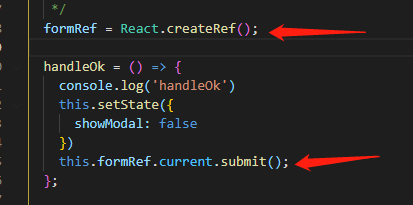My current code:
RestTemplate restTemplate = new RestTemplate();
restTemplate.getMessageConverters().add(new MappingJackson2HttpMessageConverter());
Mall[] malls = restTemplate.getForObject(url, Mall[].class);
I need to add some custom headers for my request, in form:
X-TP-DeviceID : <GUID>
What is the simplest way to do that in my case? Is there any way to add custom headers definition to my restTemplate object before I send the request to server?
[edit]
Is it correct?
RestTemplate restTemplate = new RestTemplate();
restTemplate.getMessageConverters().add(new MappingJackson2HttpMessageConverter());
HttpHeaders headers = new HttpHeaders();
headers.set("X-TP-DeviceID", "1234567890");
HttpEntity entity = new HttpEntity(headers);
HttpEntity<Mall[]> response = restTemplate.exchange(url, HttpMethod.GET, entity, Mall[].class);
Mall[] malls = response.getBody();
[added]
So, I managed to get it working. However, I'm not fully satisfied with that. In my case I will need to provide the same custom headers for all the calls I make.
So, my next question is - Is it possible to set my custom headers to be added automatically on each web-service call, for example, by extending RestTemplate class and putting all custom headers there? Then, all I would be needing to do would be to simply use my custom extended RestTemplate instead of the stock one, and all my custom headers will be present there by default.
You can pass custom http headers with RestTemplate exchange method as below.
HttpHeaders headers = new HttpHeaders();
headers.setAccept(Arrays.asList(new MediaType[] { MediaType.APPLICATION_JSON }));
headers.setContentType(MediaType.APPLICATION_JSON);
headers.set("X-TP-DeviceID", "your value");
HttpEntity<RestRequest> entityReq = new HttpEntity<RestRequest>(request, headers);
RestTemplate template = new RestTemplate();
ResponseEntity<RestResponse> respEntity = template
.exchange("RestSvcUrl", HttpMethod.POST, entityReq, RestResponse.class);
EDIT : Below is the updated code. This link has several ways of calling rest service with examples
RestTemplate restTemplate = new RestTemplate();
HttpHeaders headers = new HttpHeaders();
headers.setAccept(Arrays.asList(MediaType.APPLICATION_JSON));
headers.setContentType(MediaType.APPLICATION_JSON);
headers.set("X-TP-DeviceID", "your value");
HttpEntity<String> entity = new HttpEntity<String>("parameters", headers);
ResponseEntity<Mall[]> respEntity = restTemplate.exchange(url, HttpMethod.POST, entity, Mall[].class);
Mall[] resp = respEntity.getBody();
Add a "User-Agent" header to your request.
Some servers attempt to block spidering programs and scrapers from accessing their server because in earlier days, requests did not send a user agent header.
You can either try to set a custom user agent value or use some value that identifies a Browser like "Mozilla/5.0 Firefox/26.0"
RestTemplate restTemplate = new RestTemplate();
HttpHeaders headers = new HttpHeaders();
headers.setAccept(Arrays.asList(MediaType.APPLICATION_JSON));
headers.setContentType(MediaType.APPLICATION_JSON);
headers.add("user-agent", "Mozilla/5.0 Firefox/26.0");
headers.set("user-key", "your-password-123"); // optional - in case you auth in headers
HttpEntity<String> entity = new HttpEntity<String>("parameters", headers);
ResponseEntity<Game[]> respEntity = restTemplate.exchange(url, HttpMethod.GET, entity, Game[].class);
logger.info(respEntity.toString());





